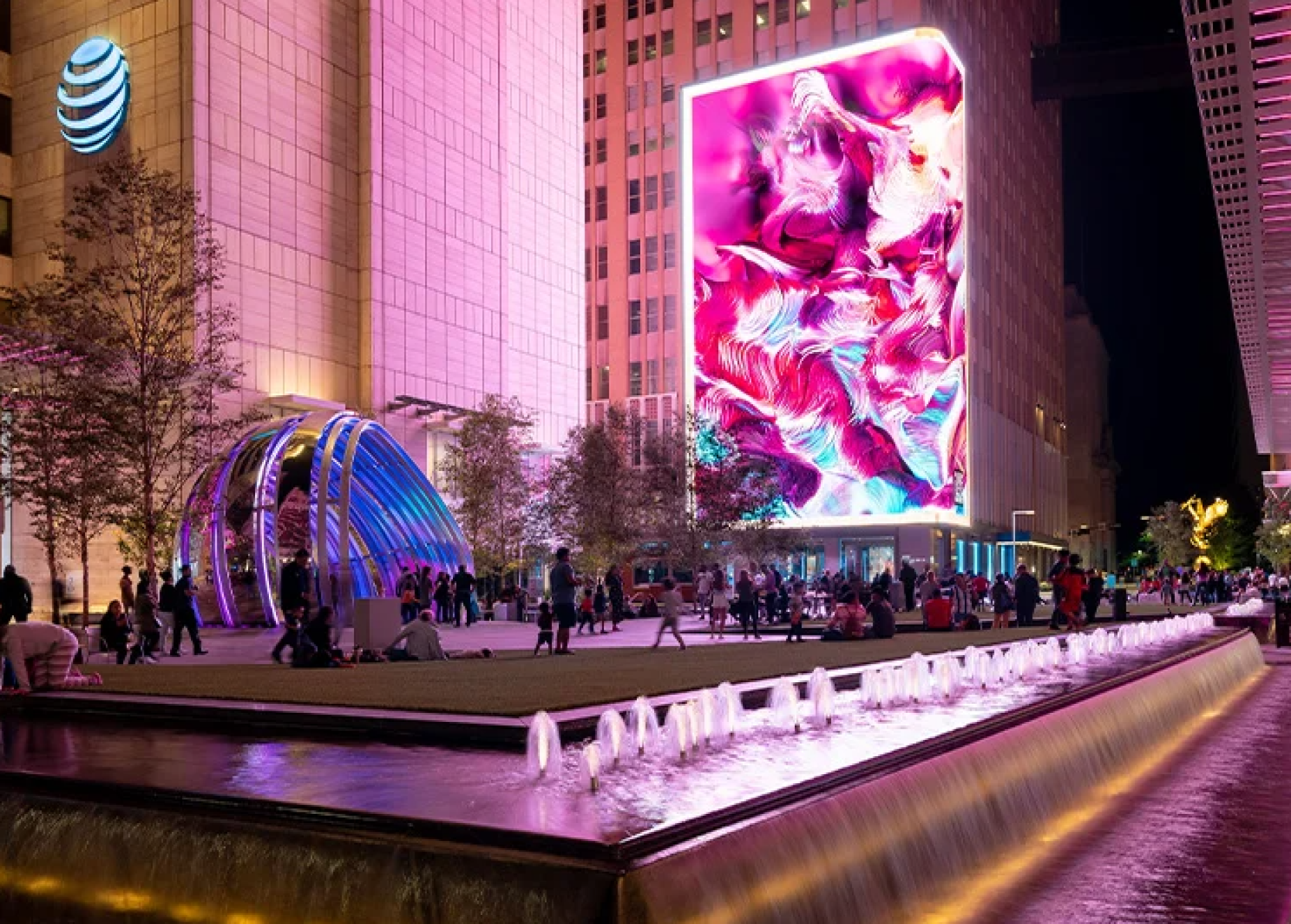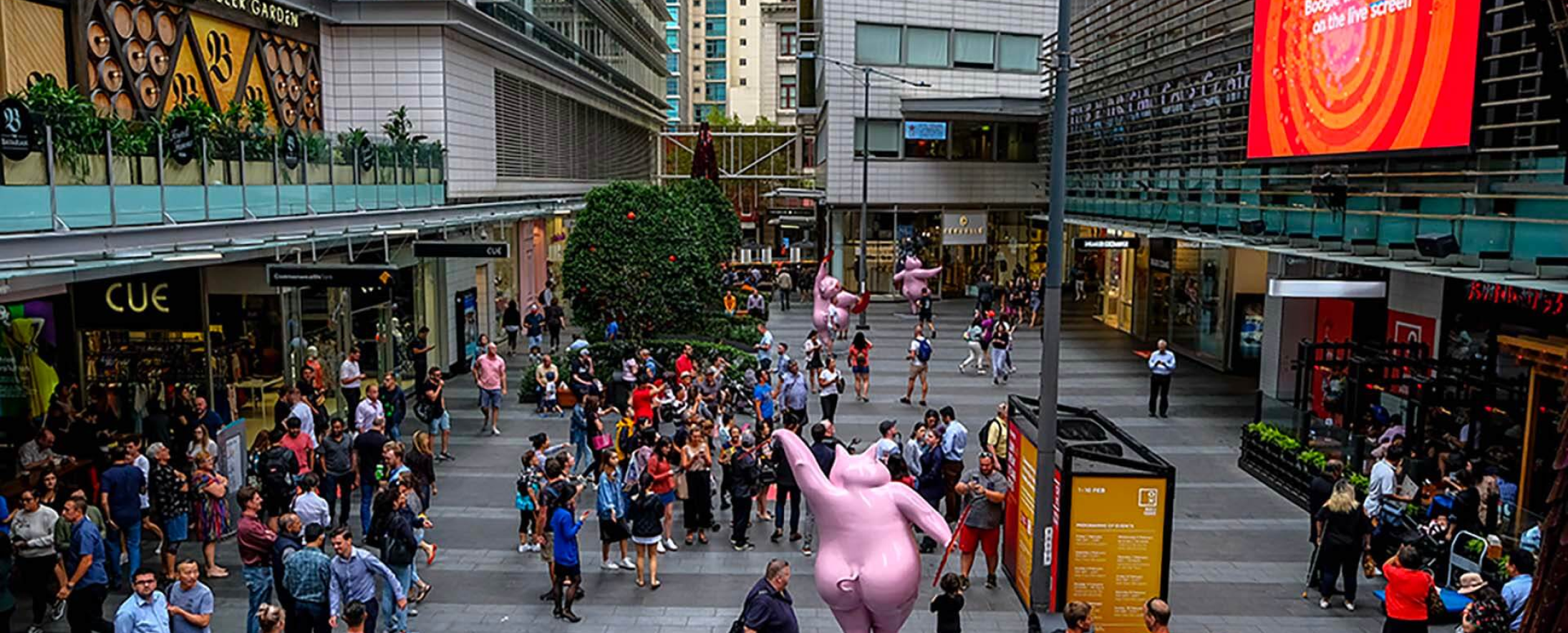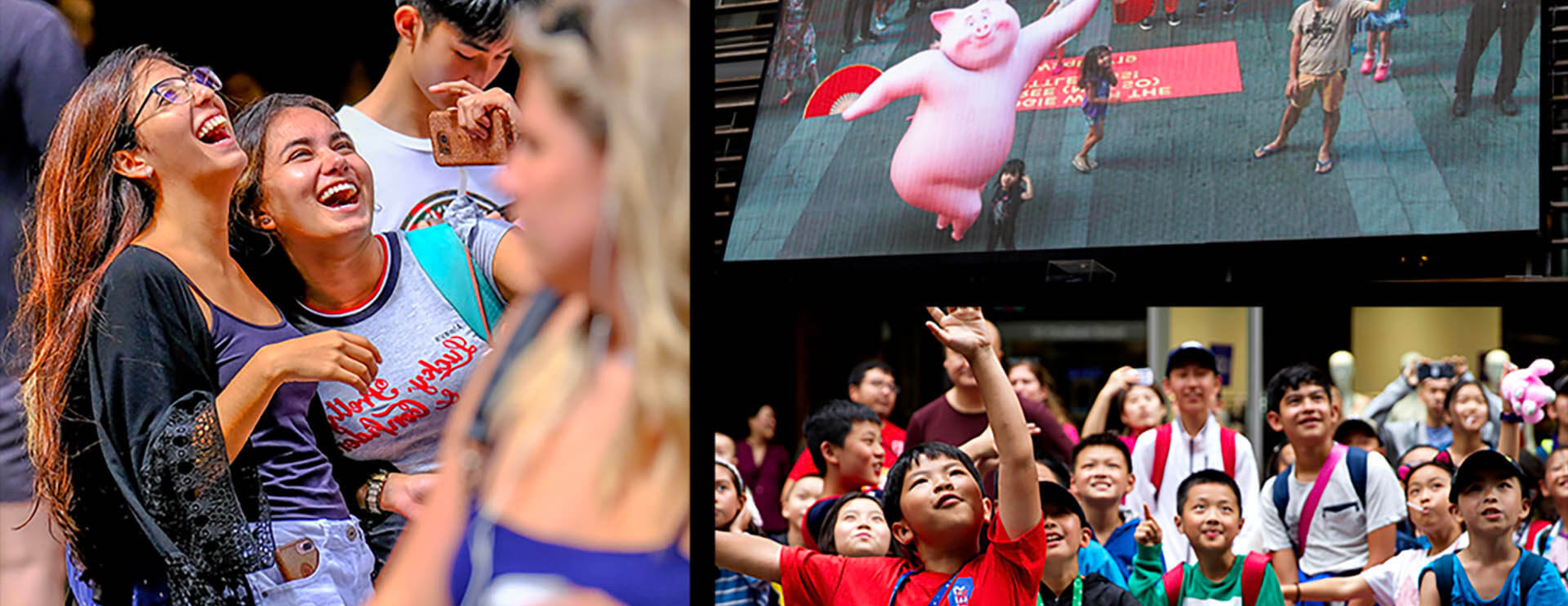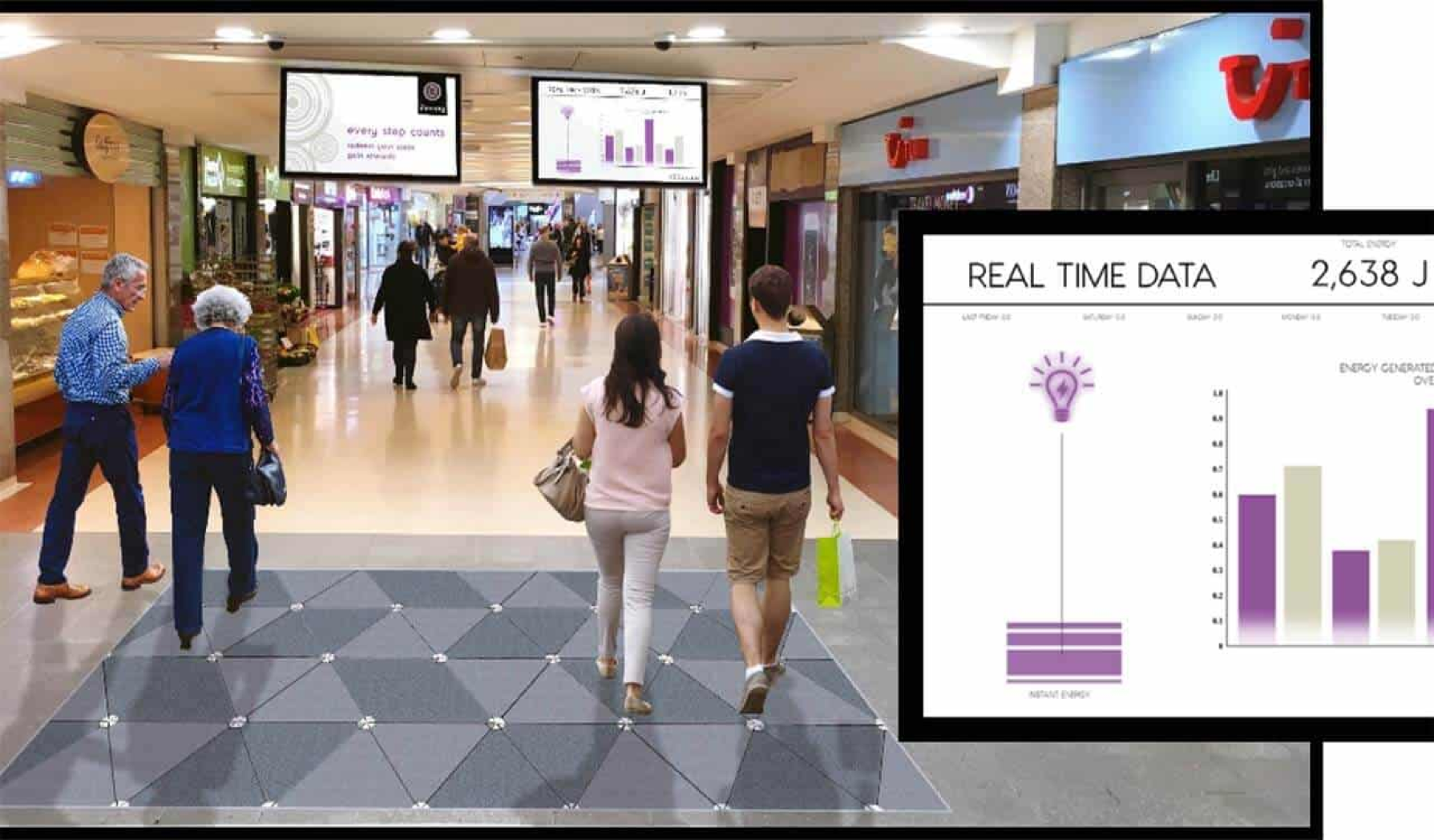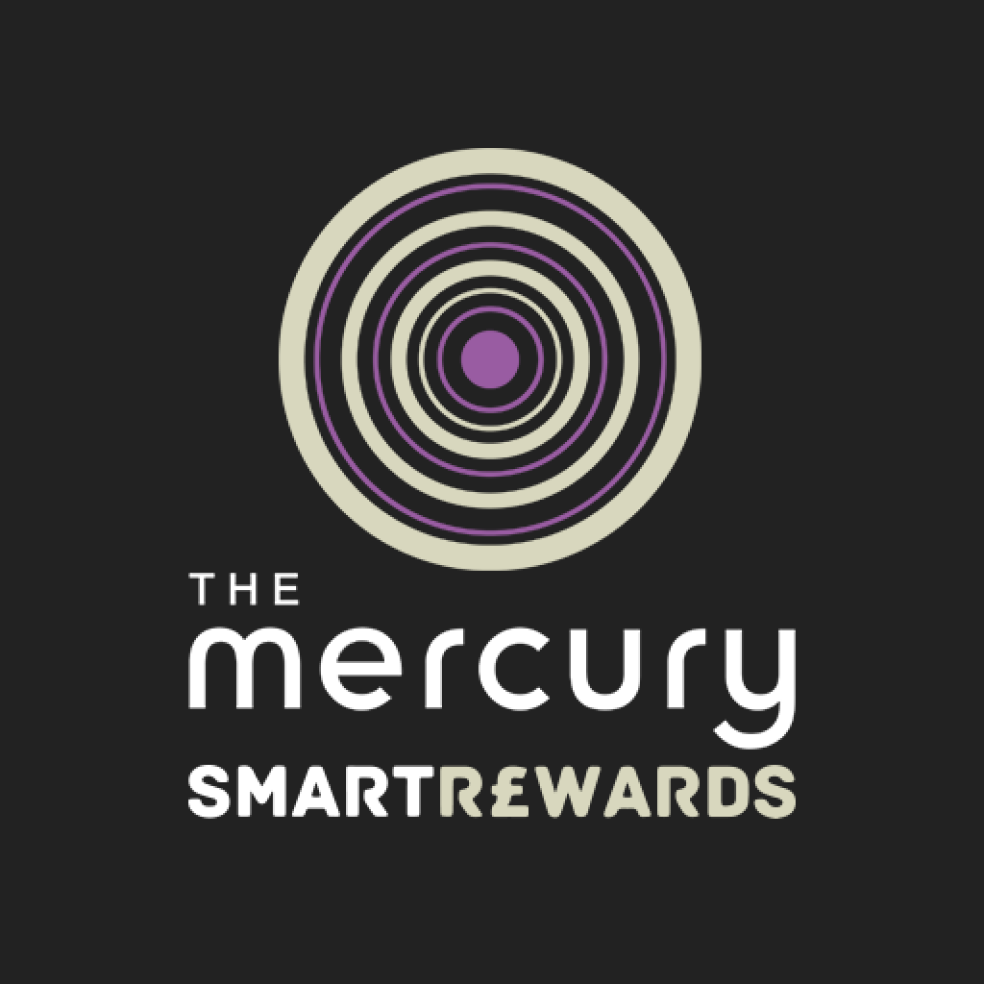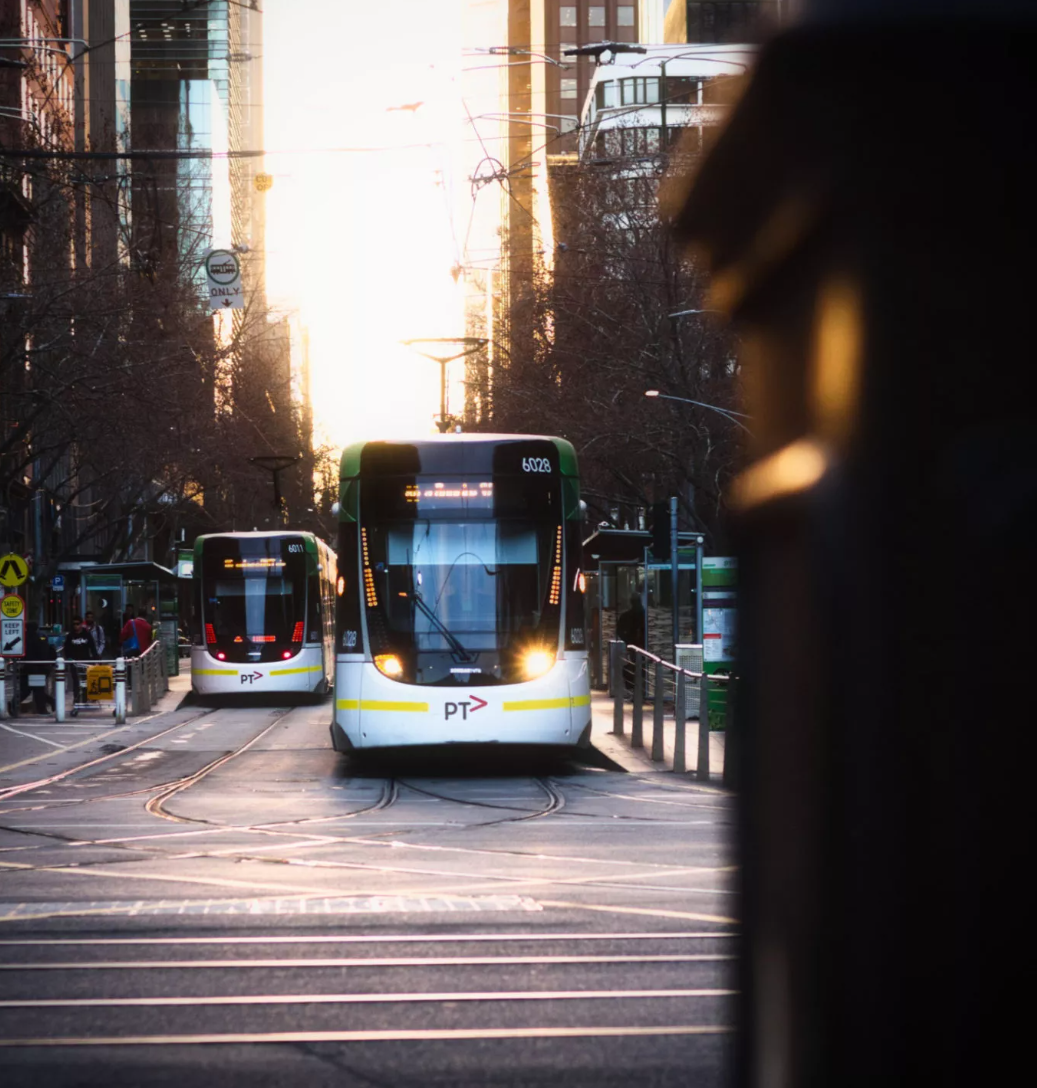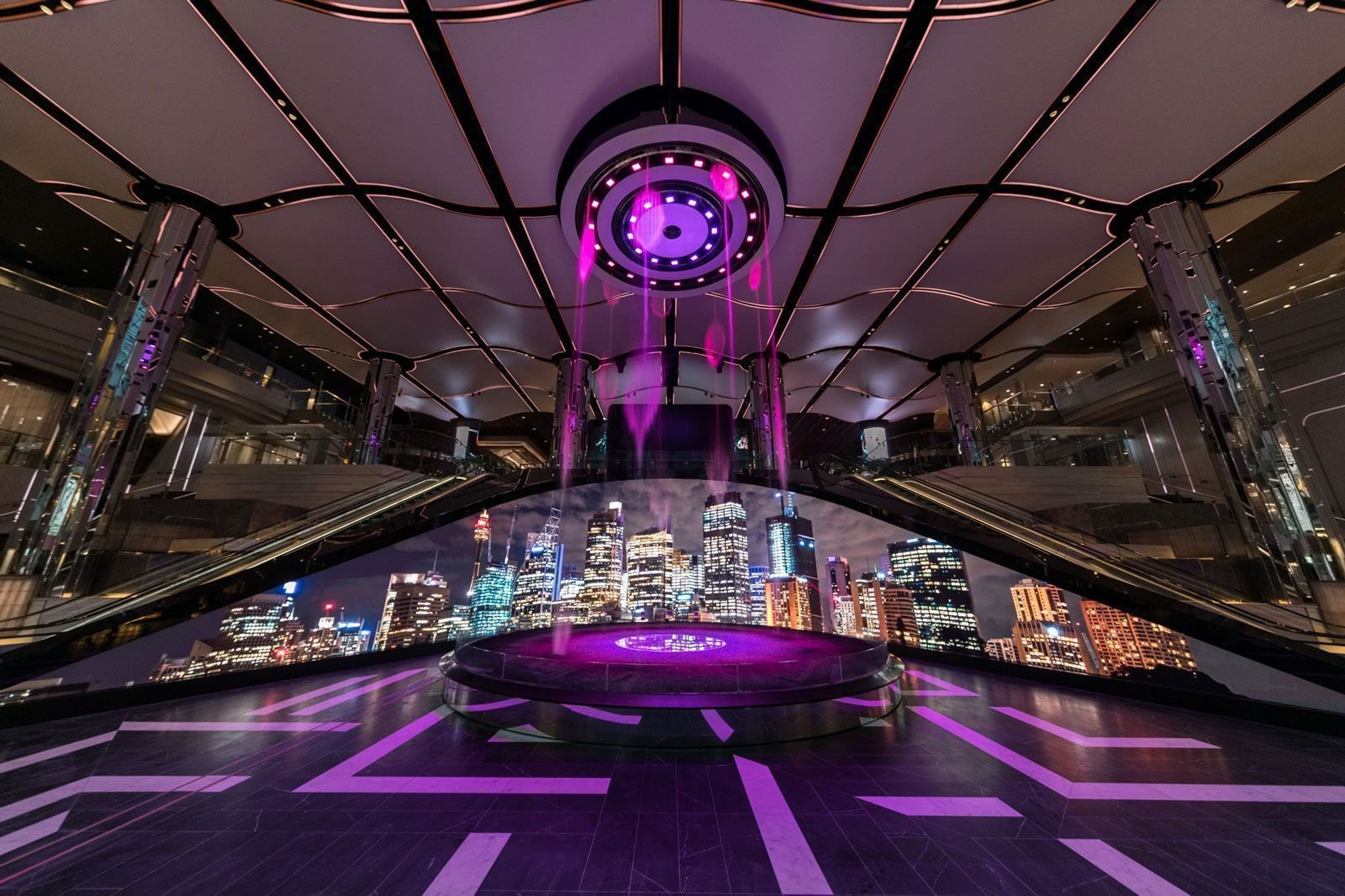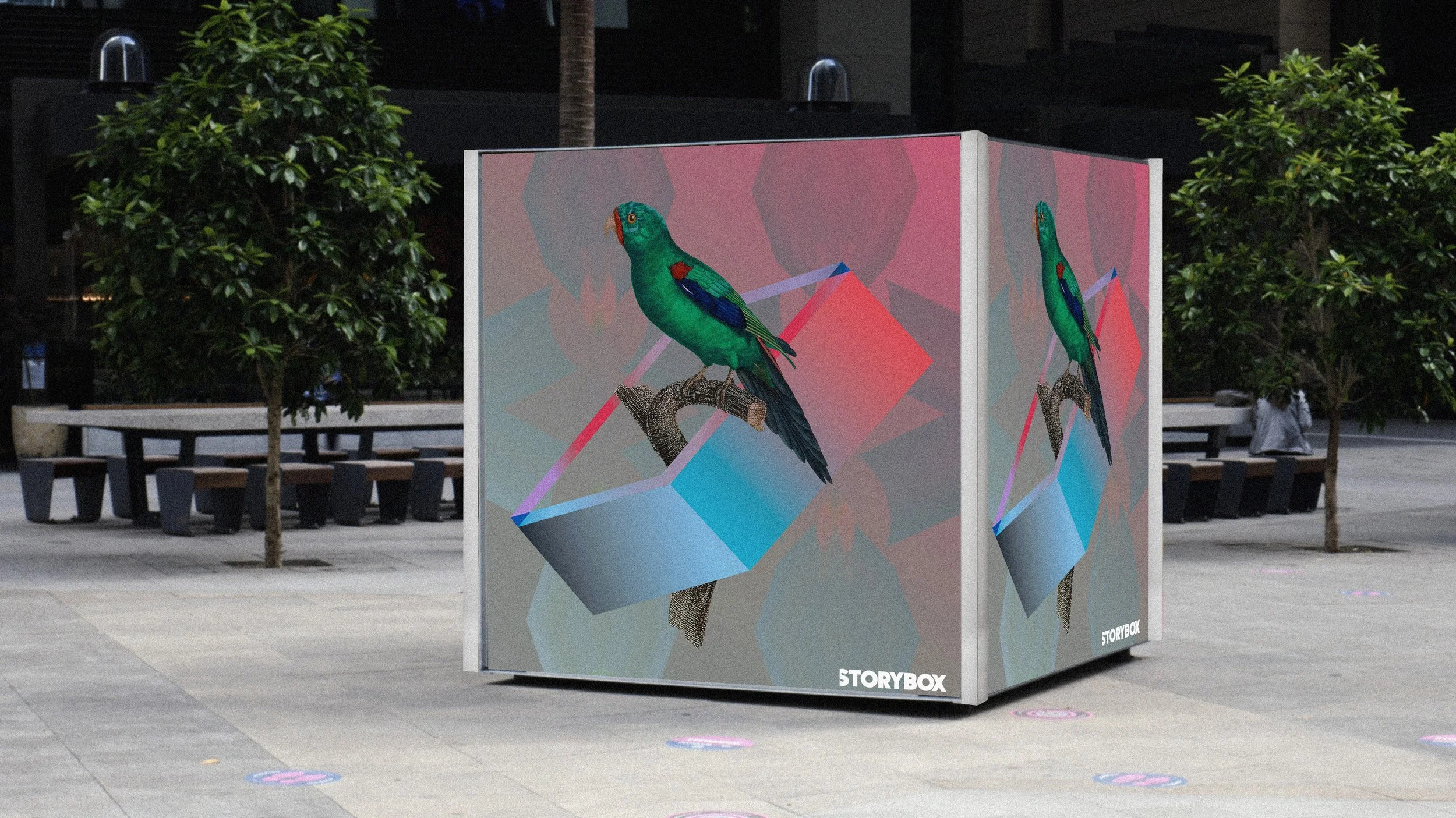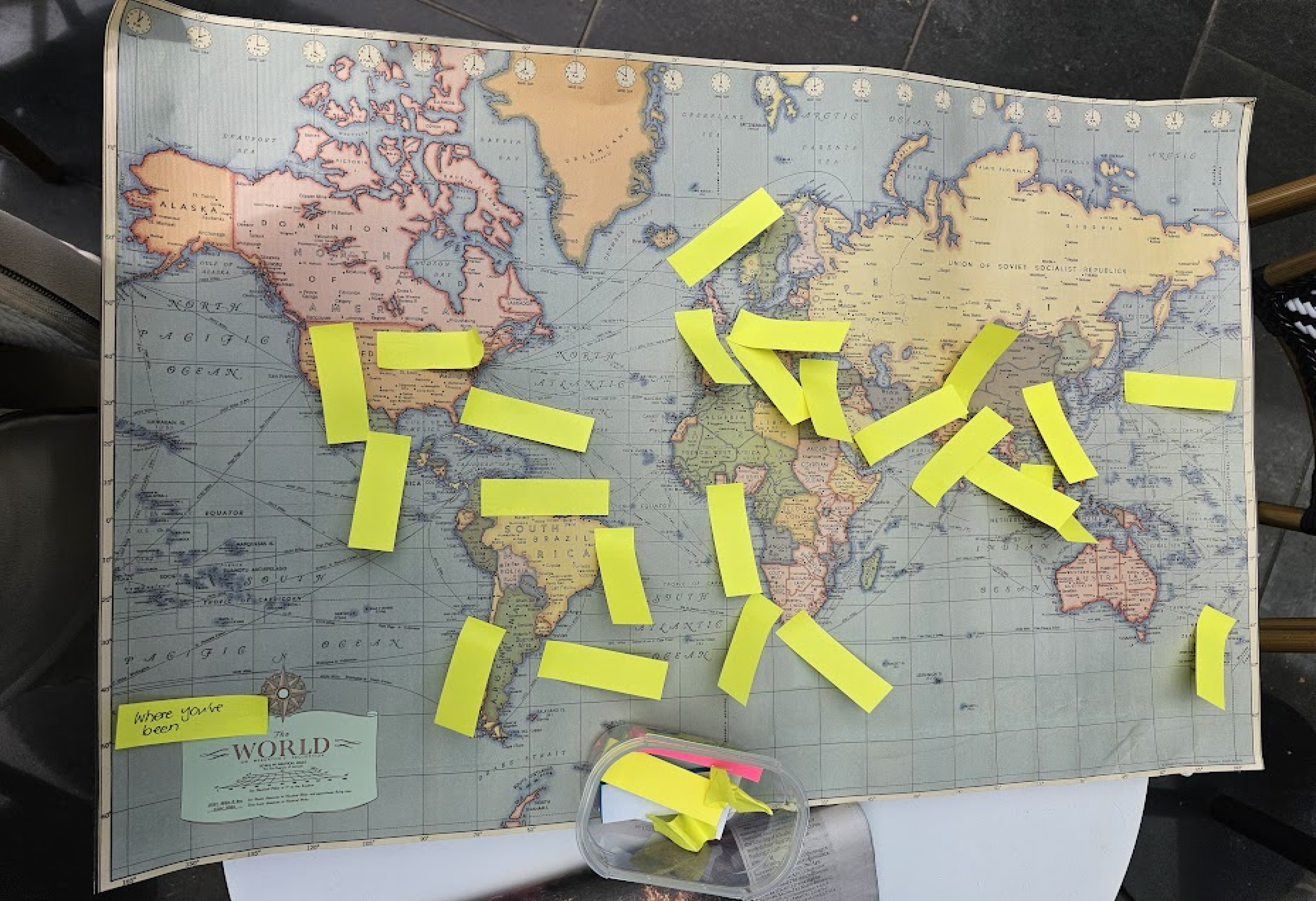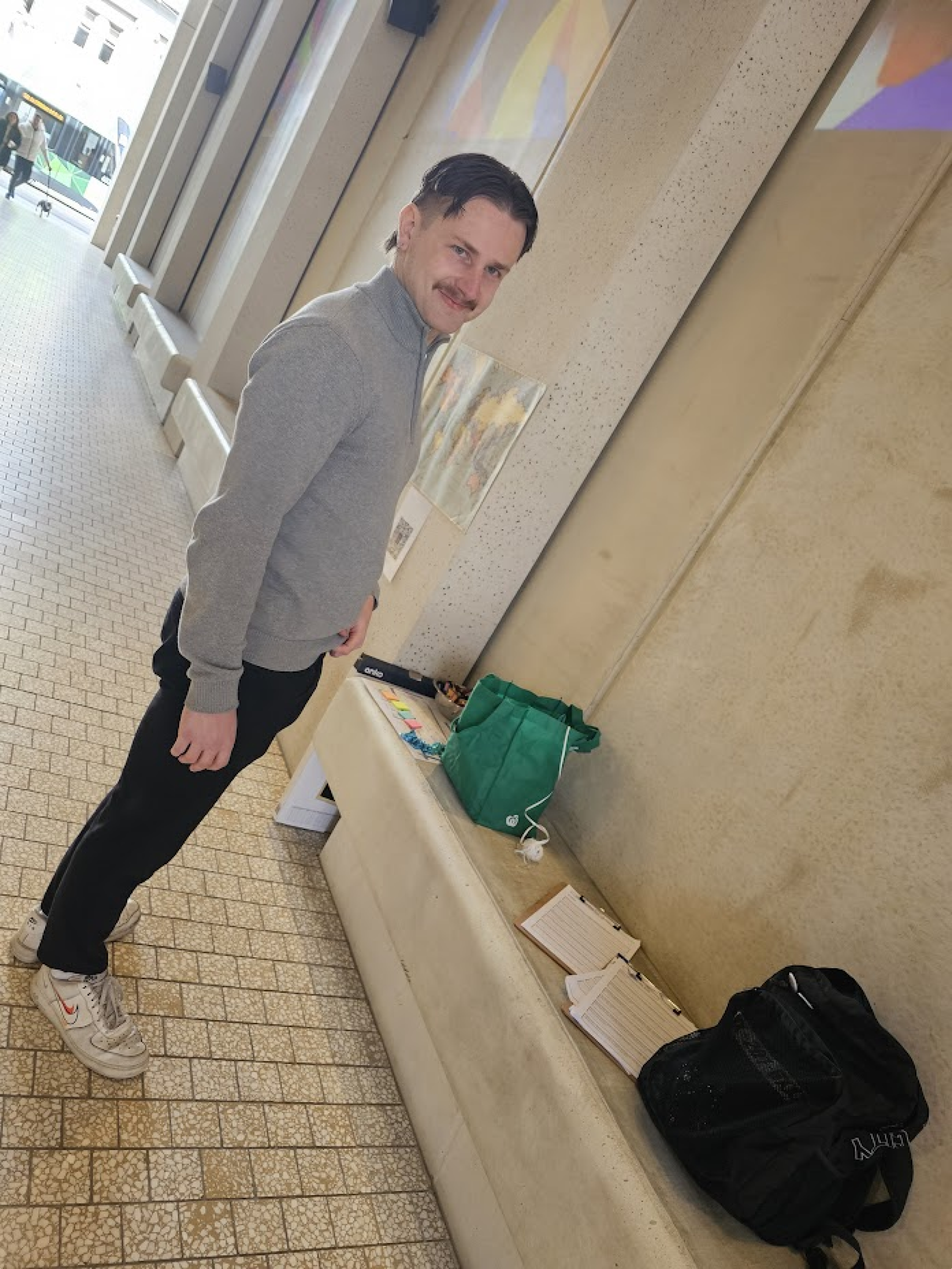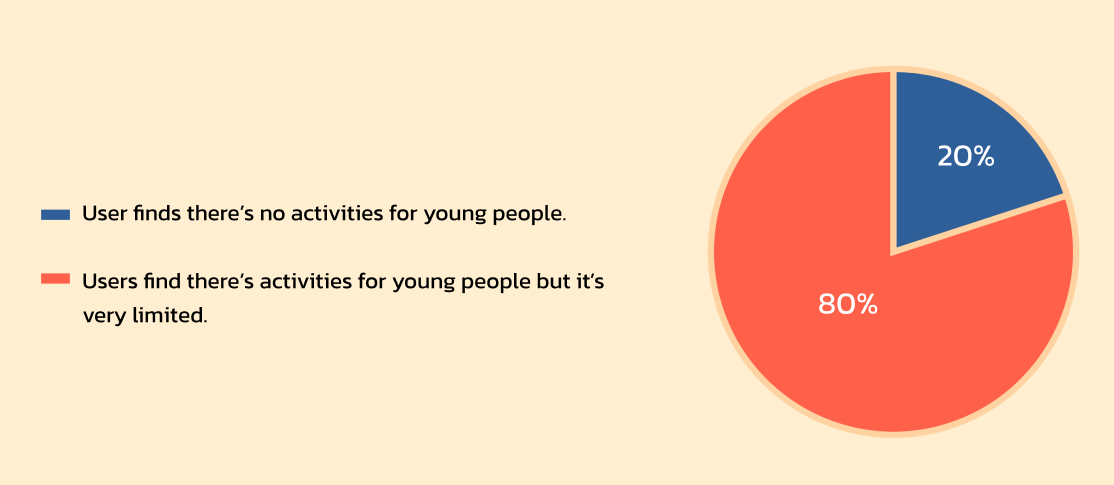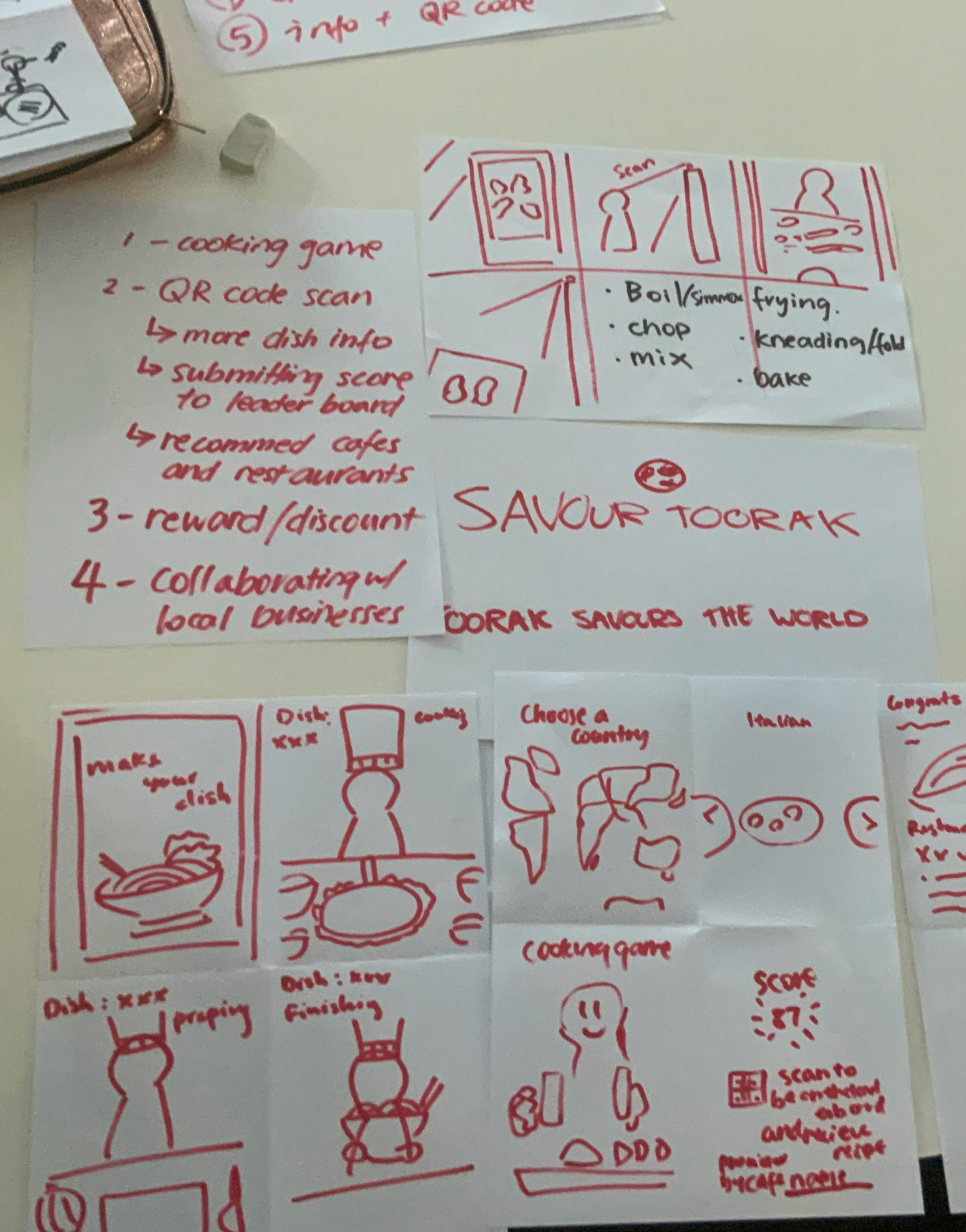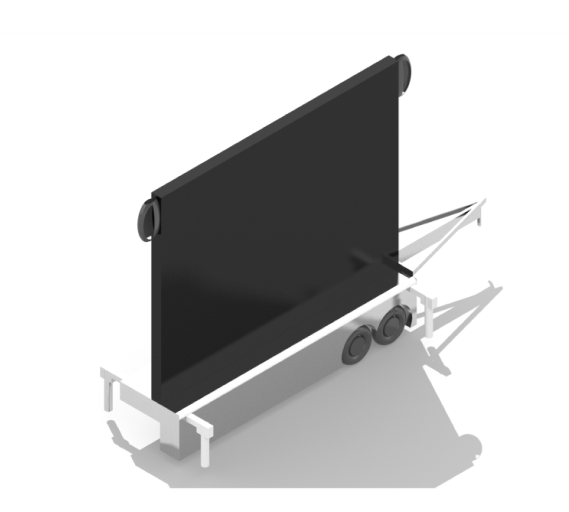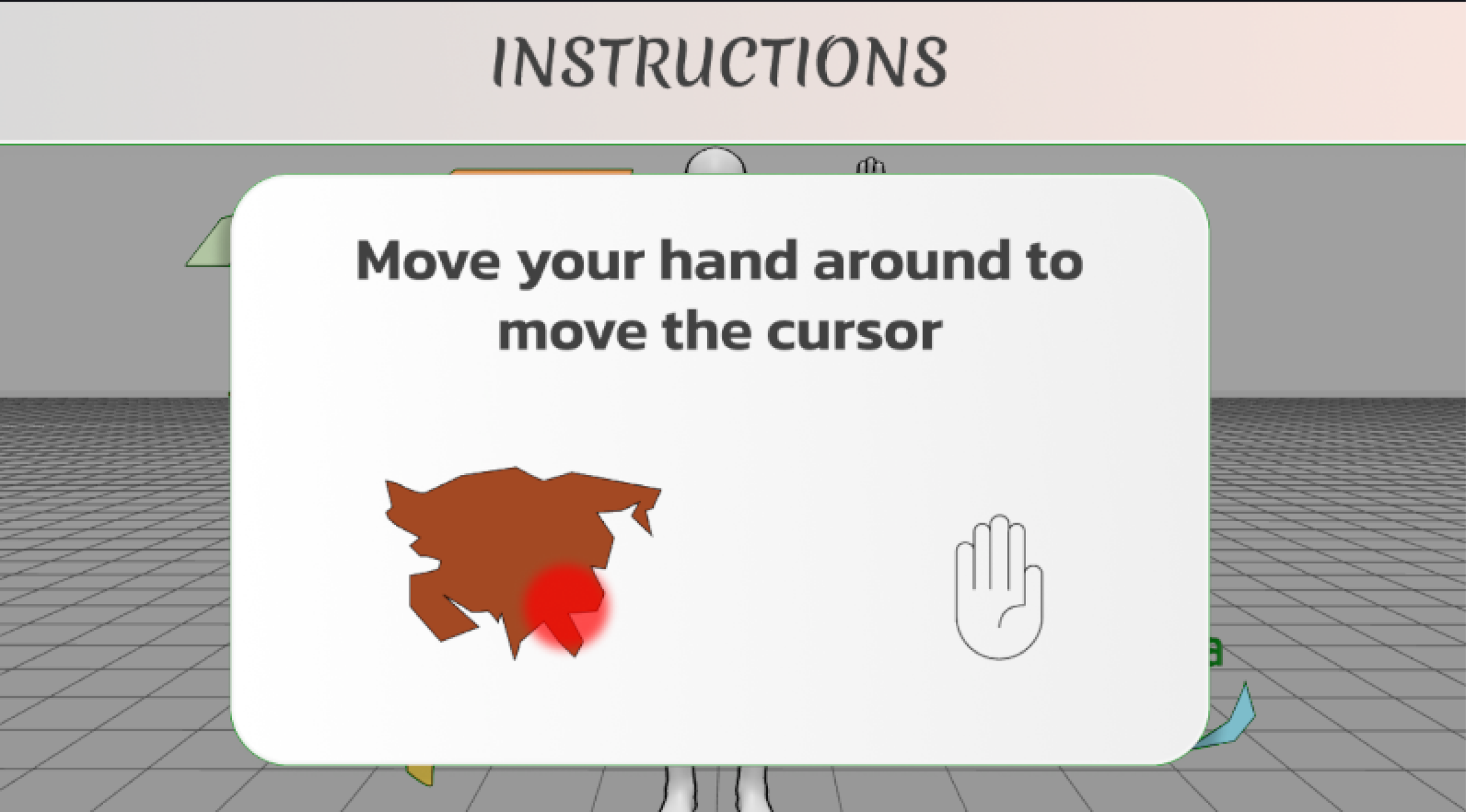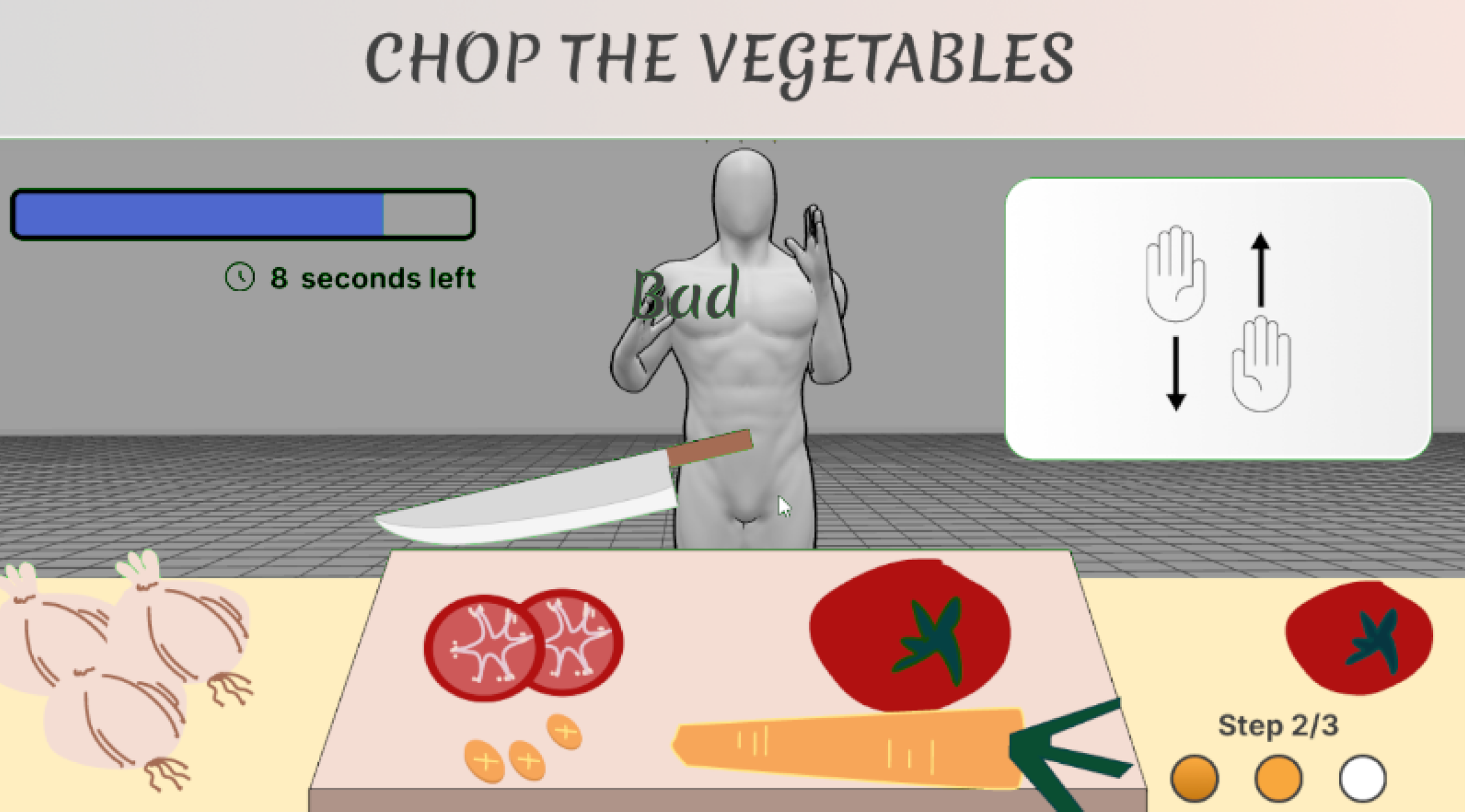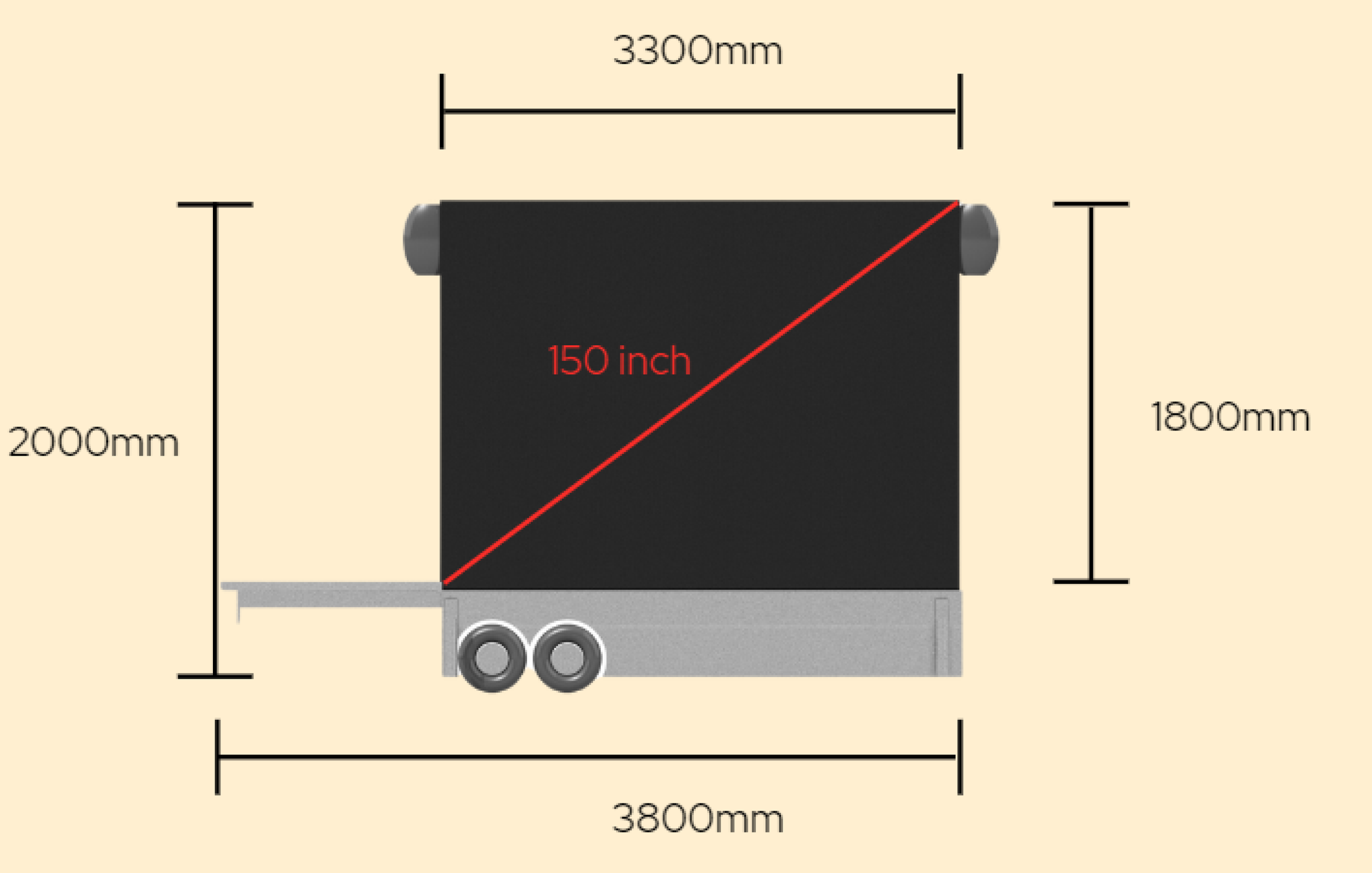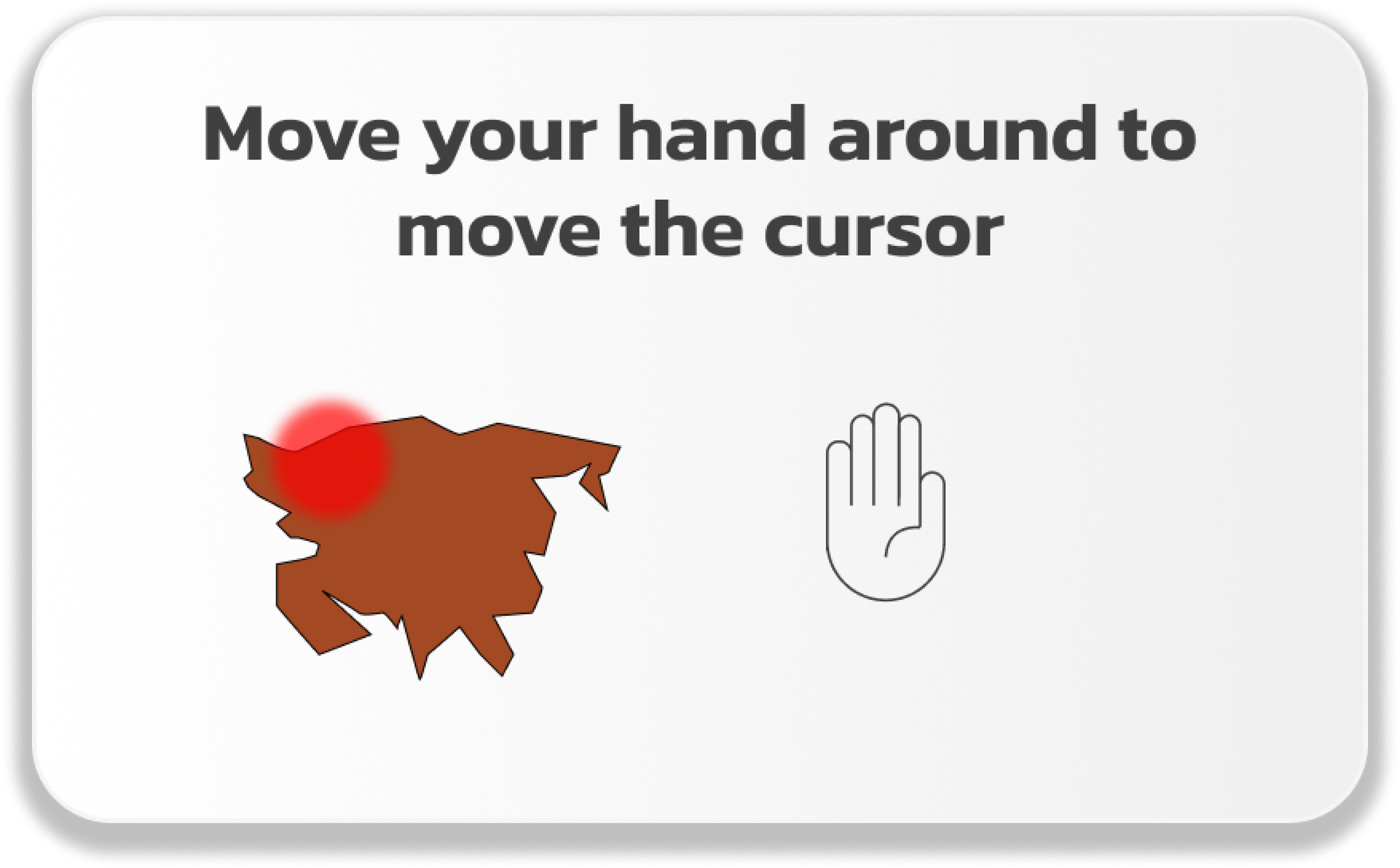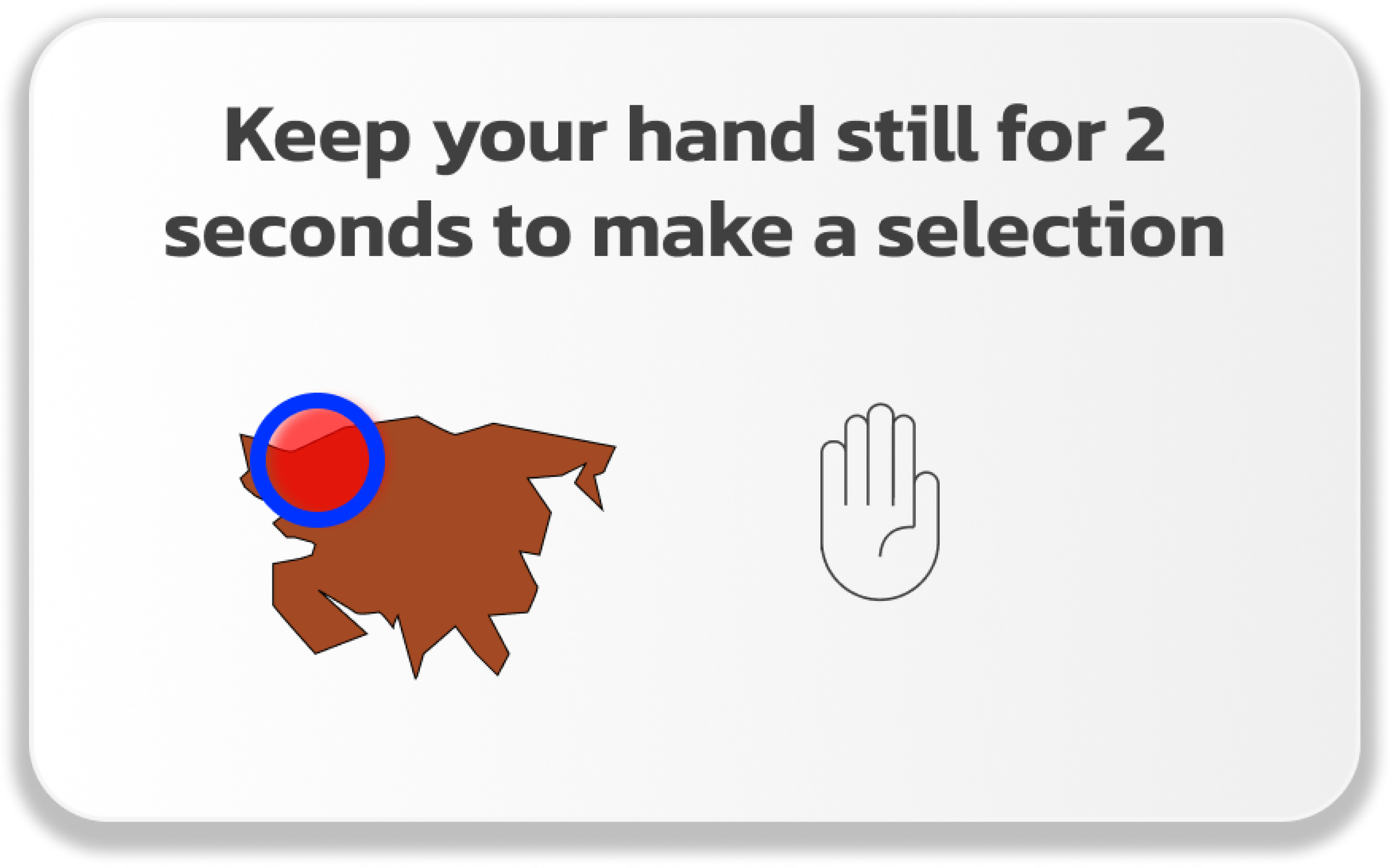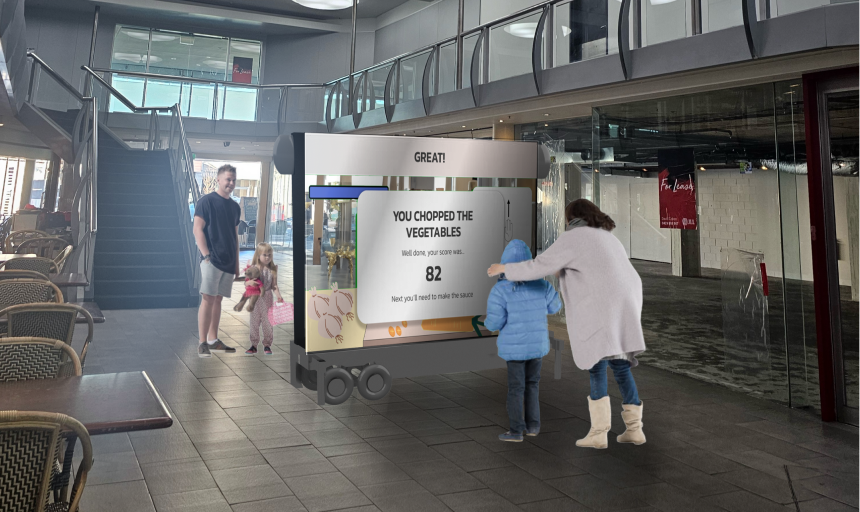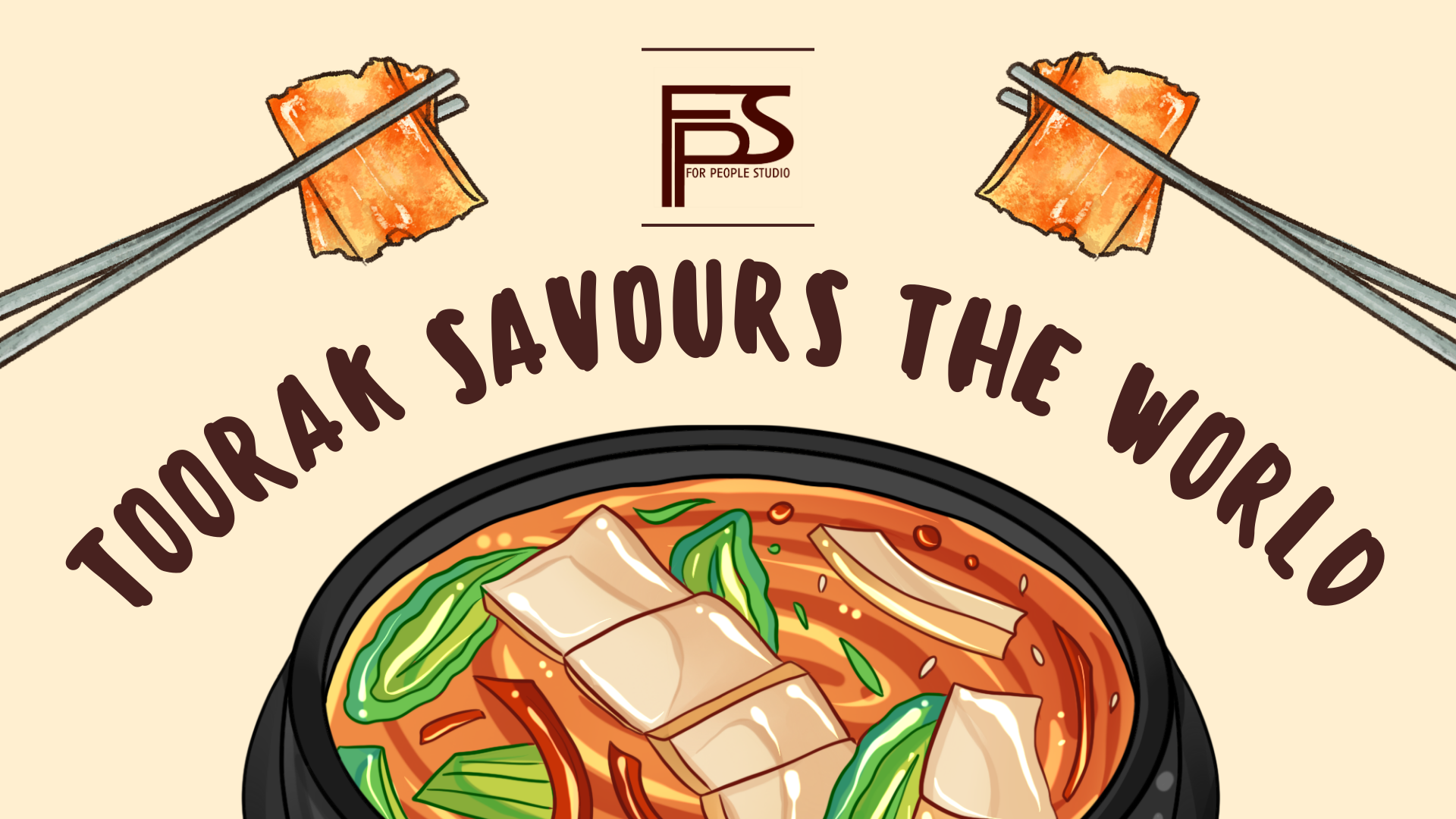
Overview:
"Toorak Savours the World" is a digital placemaking and wayfinding initiative designed to attract more visitors and keep customers in Toorak Village. Currently, the area feels uninviting to younger people. The City of Stonnington Council aims to engage young families and encourage them to discover the area. After thorough research and testing, Toorak Savours the World was developed. This interactive experience features a motion-sensor screen for a quick cooking game. After playing, participants can explore local shops, support businesses, and promote cultural diversity in Toorak Village.
Goals:
Boost Family Engagement: Turn Toorak Village into a lively area where families can enjoy time together instead of just passing through.
Showcase Local Food: Highlight various food options and lesser-known restaurants to attract visitors and residents.
Encourage Community Interaction: Promote connections between families and local businesses to build a sense of community.
Team:
Dillon Ayoubi, 3rd Year
Harry Roadley, 3rd Year
Lyn Van Phi, 3rd Year
Yukino S Ohori, 3rd Year
Role: UX/UI Designer / Idea generation, UX researcher, Information Architecture, Prototyping
Timeline: 3 months (July - October 2024)
Tools: Figma, Canva, Adobe Suite, Pen and Paper
Brief:
The City of Stonnington Council requested a digital placemaking/wayfinding opportunity that encourages young families and children to come visit Toorak Village and stay for longer.
Client: City of Stonnington Council, Toorak village
Target Audience: Young families, Young children
Aim: Boost customer visits and retention by encouraging them to explore Toorak Village more.
Outcome: Testable Digital Placemaking and wayfinding Prototype
Secondary research - Case studies
The Reveal Project
The Reveal Project took place in King's Lynn, UK, in 2018. It was an initiative by Collusion, an arts group from Cambridge, focusing on creating an interactive space that blended the town's history with modern technology.
Key Takeaways:
A highlight was a "Treasure Hunt," which utilized augmented and virtual reality to allow participants to uncover hidden stories about the town.
Participants engaged by scanning QR codes and AR markers scattered throughout the area.
This interactive experience revealed historical tales and local folklore, enhancing the connection to the community's heritage.
AT&T Discovery District
The AT&T Discovery District is a city space with three linked areas: The Plaza, AT&T Headquarters Lobby, and dining spots. In the Plaza, interactive screens adapt sound and light to visitors' movements. The district is equipped for live shows with quick stage setups, creating an engaging event environment.
Key Takeaways:
The district serves as a gathering place that enhances community engagement through art and culture, featuring advanced audiovisual displays.
The Plaza's design, situated within corporate areas, provides a vibrant atmosphere, benefiting both visitors and local food vendors.
This social hub fosters connections, supporting the surrounding businesses and enriching the overall guest experience.
The New York–Dublin Portal
The New York–Dublin Portal is an interactive project by Lithuanian artist Benediktas Gylys, created for Dublin City Council and Manhattan's Flatiron District. It aims to strengthen the digital link between New York and Dublin to improve smart tourism in 2024.
Key Takeaways:
By offering a continuous live-streamed visual experience, it cultivates a strong sense of community that transcends geographical boundaries.
Situated on Dublin’s main street and in Manhattan’s Flatiron South Public Plaza, both known for their corporate environments, the Portal has established itself as a significant landmark.
This positioning attracts visitors and bolsters local businesses, contributing to the economic vitality of the surrounding areas.
The (Not so) Little Pigs
The "Three (not so) Little Pigs" project, created by Vandal for World Square, is a digital art initiative in Sydney. It seeks to combine digital tech with urban art to improve public spaces and encourage community participation.
Key Takeaways:
QR codes placed throughout the streets offered real-time updates on discounts, events, and navigational assistance within the community.
Innovative projection mapping techniques created vibrant and dynamic visuals that enhanced the overall experience.
Sensors enabled interactivity, allowing participants to engage more deeply with the activities and art installations.
The Mercury Mall Smart Rewards App
The Mercury Mall Smart Rewards App is a mobile app that gives users discounts and rewards based on their steps in the mall. The "smart walkway" collects energy from customer footsteps, and screens display the electricity produced. Users can turn this energy into rewards, encouraging sustainable shopping.
Key Takeaways:
The mall rewards eco-friendly customers by converting foot traffic into energy for discounts.
Screens show how much electricity is generated from steps, which can be exchanged for in-store rewards.
According to Spencer Hawken, Centre Manager of Mercury Mall, local shopping benefits customers with value and community connection.
Metlink Melbourne
The Metlink Melbourne project, created and reviewed by Diadem, sought to enhance public transport in Melbourne by improving wayfinding at 8,000 bus stops, 4,000 tram stops, and 350 train stations. This citywide effort aimed to establish a unified wayfinding system and brand, which was later renamed Public Transport Victoria (PTV) in 2012.
Key Takeaways:
Focused areas included location-specific signage, hierarchical organisation, and long-term cost efficiency.
Improvements aimed at enhancing signage legibility and connectivity among buses, trams, and trains.
User feedback indicated a significant enhancement in understanding transit schedules and routes.
The Star Grand Foyer
The Star Grand Foyer Digital Art Gallery, started in 2018 by Ramus, is the world's first permanent interactive gallery of its type. It uses advanced technology to create an engaging art experience, displaying Sydney's light and movement while featuring works by local and international artists and animators.
Key Takeaways:
Elements within the gallery transform based on the time of day, ensuring a dynamic and unique atmosphere for each visit.
In addition to visual displays, the integration of synchronized light, sound, and water performances enhances the experience, offering a rich, multisensory environment.
This combination of visual, auditory, and tactile elements encourages deeper interaction and immersion for all attendees.
Story Box
STORYBOX.co is a four-panel LED cube that is a digital canvas for sharing community stories, culture, and art. It encourages engagement by displaying past stories and inspiring future discussions. It includes interactive features, like a "mood ring" that shows community feedback from an online quiz.
Key Takeaways:
The cube is mobile, allowing for easy transportation and setup at various locations.
Certain units come equipped with solar panels, enhancing sustainability and adaptability for outdoor events and festivals.
Custom programming options are available, enabling users to tailor sound features and schedule content through a cloud-based system.
Secondary research - Literature review
Food and public spaces play a crucial role in fostering community, supporting cultural identity, and promoting inclusivity. Food serves as a medium for expression and connection through cultural traditions, shaping the community's character and reflecting its evolution. Similarly, public spaces are essential "third places" that nurture social bonds, enhance the quality of life, and provide inclusive environments where families, particularly those with young children, can gather, interact, and cultivate a sense of belonging. Research indicates that well-designed public spaces promote social interaction, support child development, and improve mental and physical health, thus fortifying community ties.
Initiatives like Toorak Savours the World effectively leverage digital placemaking to weave together these elements. Interactive technology highlights local culinary diversity while revitalising public spaces into inclusive, family-friendly hubs. This approach encourages community members to engage meaningfully with their surroundings, celebrating cultural diversity and fostering a resilient community spirit. Future projects should continue to embrace digital tools to enrich culinary heritage and enhance public spaces, contributing to a vibrant and inclusive community.
Primary research
For the main research, we used five methods to understand our audience's needs and desires: User Interviews, Contextual Inquiries, Affinity Mapping, Personas, and User Scenarios. Here’s what we’ve learned so far.
Starting
Before commencing our primary research, we took the initiative to visit Toorak Village individually at various times throughout the day to collect preliminary information. This exploration allowed us to better understand the environment and its dynamics. Following our visits, we brainstormed to consolidate our thoughts on digital placemaking, discussing our initial concepts and identifying locations where our potential solution could be effectively implemented.
Primary research - Affinity diagram
Primary research - User interviews
We conduct a total of 2 user interviews, 1 for weekdays and 1 for weekends. The location was at Coles Local Hall, and we interviewed people by inviting them to tell us where they’ve been by sticking a sticky note on the map and answering questions. We interviewed a total 15 people with an age range from 20 to 70, and below are our interview results
Primary research - User interviews results
Primary research - Contextual Inquiry
General Impressions:
Mixed Perception: Visitors found a mix of old and new buildings, which created a dull atmosphere that didn't match the expectations for a wealthy area.
Sense of Isolation: Many felt lost or unwelcome in quieter places like Toorak Place, which appeared deserted.
Shopping Experience:
Limited Local Character: Health-related businesses took over, overshadowing local shops.
Affordability Issues: Shops were seen as expensive, appealing more to older, wealthier customers rather than younger ones.
Parking and Accessibility:
Convenient Parking: Parking was good, but parallel parking was difficult. Many preferred the $6 all-day option.
Public Spaces and Amenities:
Underwhelming Public Areas: Places like the Wind Tunnel lacked lighting and activity. The cafes were nice but fell short of expectations.
Cultural Elements:
Sculptures and Art: Street sculptures were intriguing but often unnoticed. More public art engagement is needed.
Limited Appeal for Youth: The area seems unwelcoming to younger people who want modern shops and cultural activities.
Recommendations for Improvement:
Enhance Visibility: Improve signs and lighting to make businesses more noticeable.
Diversify Retail: Increase shop variety to include more local and affordable options.
Increase Art Engagement: Increase public art and cultural events to boost community involvement.
Personas:
Dehlia Jemese is a 29-year-old senior accountant. She is married with a child and lives in Toorak Village.
Goals:
Hopes to see more young people in the area.
Wants trendy boutiques and cafes in the village.
Pain Points:
Limited activities or spaces for kids outside of school.
No trendy shops or places for young people.
Ricardo Lewis, 41, owns an Italian café in Toorak Village. He is married and values strong connections with his regular customers.
Goals:
To expand his customer base and attract non-locals.
To be more involved with social media to promote his café.
Pain Points:
The customer base is strictly local and limited.
Hard to find time between managing his business and family.
Neville Baines is a 60-year-old retiree, married with one child. He previously worked in Toorak Village.
Goals:
To live in a safe and peaceful area.
To help his community.
Pain Points:
Feels ignored by the council.
Lacks trust in the government's and council actions and views.
User Scenario:
Ethical Considerations:
Inclusivity and Accessibility
Consider whether the installation is accessible to all, including individuals with disabilities, such as visual or placement. Ensuring the screen and activities are accessible is crucial to preventing the exclusion of any members of the community.
Cultural Representation and Sensitivity
Since the project promotes multiculturalism, it is essential that the cuisines and cultural stories represented are authentic, respectful, and free from stereotypes. Local representatives from diverse cultural backgrounds should be involved to accurately and respectfully introduce their food and heritage.
Potential Commercial Bias
If the wayfinding guides visitors to certain restaurants or shops, consider if there’s a fair representation of all businesses. Avoid favouritism to ensure that all businesses/restaurants benefit from the increased foot traffic.
Child Safety
Since the primary audience includes families with children, extra precautions are needed to ensure that digital and physical experiences are safe for children and that inappropriate content, data collection, or security risks are eliminated.
Local Community Consultation
Engage with local residents and business owners before starting the project to avoid imposing changes they may not want or agree with. This helps ensure the project genuinely benefits the local community and aligns with their preferences.
Research Limitations:
Limited Interview:
We only interviewed a small group of locals from Toorak Village. Although the age range of the interviewees did fall into the age range we wanted, it is still a limited number of interviewees.
Children’s Opinion:
Despite having WWCC, we could not have a fully interview with any child from Toorak Village. We try to set up interview in both weekdays and weekends but couldn’t success.
Failed Surveys:
We set up a QR code with our survey to collect more data from Toorak Village, but the survey didnot end up successfully. Part of the reason is technical issues, and other people from Toorak Village didn’t really like the QR code scanning and did not participate much in the survey despite oure trying to put them out.
Prototype:
Our design solution was a gamified augmented reality (AR) experience highlighting cultural diversity by allowing users to explore global cuisines. Players, alone or with a partner, choose a region and a difficulty level based on a specific dish. They then engage in a three-stage game that simulates cooking tasks like chopping, boiling, and simmering, as displayed on a screen. After finishing the stages, users receive a score of 100 and a QR code linking them to a simplified recipe and a local restaurant offering the dish. This encourages users to play again and learn about more cuisines worldwide.
The design aims to attract younger audiences and enhance cultural diversity in Toorak Village by creating a fun AR experience for discovering global foods. It combines technology, physical activity, and education, making the journey enjoyable and engaging. The QR codes offer simple recipes and restaurant directions, catering to young families and ensuring the experience is accessible and entertaining while fostering inclusivity and diversity in the area.
Design Brief:
Requirements:
Multiple mobile monitor trailers with built-in motion sensor technology and speakers are available. The mobile monitors are outdoor-proof and can be placed in various locations around Toorak.
On the screen is an interactive motion sensor cooking game that adds and saves scores of players if a QR code is scanned. A discount or voucher is required for the businesses promoted at the end of the game.
Value:
User: Uses technology and cuisine to attract young families to the village.
Social: Engages families in learning about cultural diversity and inclusivity.
Environmental: Promotes outdoor activities in public spaces.
Economic: Boosts foot traffic and local business activity.
Technical:
Screen trailer: Integrated speakers motion sensors, and speakers.
Interactive Screens: High-definition displays for visuals.
Motion Sensors: Infrared or optical sensors adaptable to all heights.
Durability: Weather-resistant for outdoor use.
Location:
Toorak Village’s key areas of interest:
Tok H Center
Trak Mall Hallway
Coles Local Hallway
Outdoor carparks
Accessibility:
Height Adaptability: Motion sensors adjust for various heights, including children and wheelchair users.
Sound: Audio is clear and moderate for all ages.
Mobility: Trailer-based and easily relocated for accessibility, accommodating strollers and wheelchairs.
Effectiveness:
The design solutions leverage AR (augmented reality) technologies and visually appealing UI design to engage the younger demographic. The appeal of cuisine and the repeatability of the game create real-world interactions, such as through the simplified recipes and directions to local restaurants and cafes, which encourages repeat visits and longer dwell times in Toorak village
Testing:
Before making the prototype, the interaction requirements were tested by making screen storyboards and mocking up a screen on the whiteboard. This in-person testing revealed hardware requirements and issues in the fundamentals of the interaction, such as how the user's height may affect the motion sensor calibration.
Next, an initial prototype was made, with the focus on working interactions. At this stage, the style and colours of the prototype were not ideal, but the priority lay in evaluating the physical interaction between the screen prototype and the user. This evaluation was conducted on a projector screen, with one person assessing and instructing the user and another working on the prototype.
Physical storyboarding interactions and brainstorming.
Testing the interaction by drawing on a whiteboard, simulating real users.
Testing the initial prototype with various users
Results/Refinements:
Key Insights
Initial Onboarding Interaction:
The initial screen is not very visually pleasing and could use a description.
Movement Interaction:
Instructions and movement calibration are difficult and unclear for some people.
Gamer Interaction:
User does not know if their movements are correct and what is the basis for the score to change
Post Game:
A leader board would only be relevant for the kids; the focus should be on the parents and on promoting the restaurant/cafe more.
Visuals and Content:
There is not enough colour and contrast on the elements and buttons. Consider the contrast between the camera and the elements on the screen
Other Feedback:
Give more incentive for the user to want to visit the area promoted.
Design Refinements
Create a new introduction screen with a description of potential incentives and make it more inviting and clear
Have movement instructions appear when the user has not moved their cursor for selection.
” Hold hand still to select.”
Have the map, instructions, and user appear at the same time
An indication of how well the user is doing with their movement, such as bad, good, or great, should be provided so that the user knows what speed to move at and how accurately they have to move.
Include information about the restaurant, maybe remove the recipe aspect and promote the restaurant location and its other menu items/the history of that restaurant and how it came to Toorak for parent’s interest
Have better choices in colour and typography throughout the interface.
Discount and more information about the restaurant.
Solution
Screen Trailer
The mobile trailer and screen have built-in motion sensors and speakers. The trailer stands fold inwards and a cover can be placed on top for user safety.
Motion Sensors
Infrared motion sensors used in games such as Wii and Xbox Kinect or Optical Flow Sensors used in AR gaming allowing free hand gestural interaction
Interactive Screen
The optimal screen size for this set up 1.2m width and 90cm height screen that is at approximal adult eye level.
$10 000+ per device
$100 - $500 per system
$1000+ per device
Interactions
The LED screen used for the prototype is able to comfortably have two people standing in front of it interacting with the game, as well, people will be able to spectate the screen from afar. Anyone will be able to approach the screen and start interacting with it.
Specifications
1.The User sees themselves on the screen. Stands on the dot as prompted.
5. User can choose between Solo Play or Versus play
Moving hands in a circular motion.
Moving hands up and down.
Moving hands side to side.
To navigate through the menu of the interactive game, users move their hands around the screen. The motion tracking recognises this and shows a visual cursor as a red dot, allowing the user to easily see where they are tracking.
The Game
2. User calibrates their motion to the sensors by following simple instructions
6. User plays a simple gestural cooking game based on motion timing within a time limit
User’s will be prompted to start the game by standing on the dot and allowing the motion sensors to calibrate with them.
The dot’s can be vinyl stickers which are placed on the ground, or they can be other markers such as wash off paint if that is required for the location, the material can be flexible.
The LED screen will be mobile and include wheels to move around to different locations.
This opens up many opportunities to expand beyond just the interactive game. There is an opportunity to use the screen advertisements to help fund and promote other events in Toorak, and depending on changing constraints or testing locations, the prototype can be moved to different spots of Toorak Village.
All of the interactions featured in the interactive game are very simple movements that don’t require lots of movement. Users can stand still and just move their hands to play.
This allows more people to participate as it does not take high levels of coordination or effort.
Users are prompted with short instructions featuring animations, helping them understand the interaction.
Users can make selections within the menus by moving the cursor where they want to select and keeping their hand still for two seconds, where an animation will play, making the selection.
3. User selects a country of their using motion sensors
7. User completes the game learning the basic steps for cooking the dish
4. Users can select various dishes from the country that have different levels of difficulties.
8. Screen promotes a shop related to the dish within Toorak Village, offering a discount code and directions.
Conclusion
Toorak Savours the World aims to transform Toorak Village into a lively, culturally diverse destination for younger families and various groups. The project revitalizes the area by offering engaging experiences that celebrate multiculturalism and local businesses while promoting community involvement and economic growth. It aligns with the City of Stonnington’s goal to boost visitor numbers and solidify Toorak Village’s image as a friendly cultural center. By combining technology, local partnerships, and community-focused activities, Toorak Savours the World is ready to make a lasting positive impact, attracting both residents and visitors. This initiative serves as a flexible model for digital placemaking, adapting to community needs and consistently benefiting stakeholders. By strengthening connections among visitors, local businesses, and the diverse culture of Toorak Village, Toorak Savours the World sets a new benchmark for engaging and inclusive community development.




